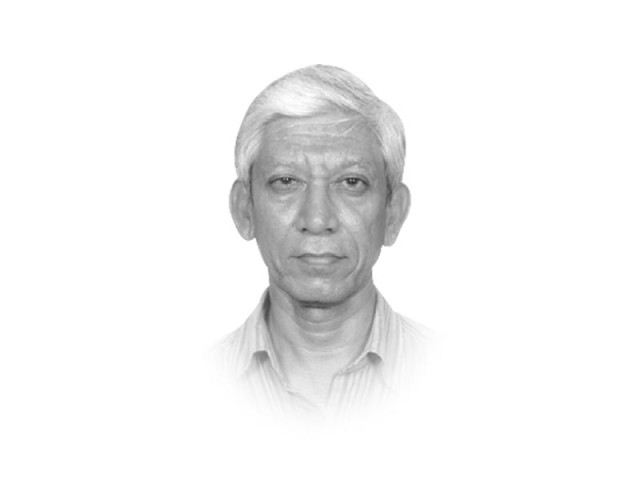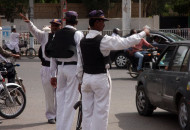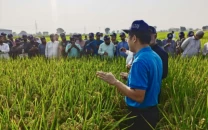Victims and beneficiaries of Partition
In case of agricultural property located in western Punjab, Sikhs & Hindus were losers, Muslim mohajirs beneficiaries.

The colonial masters knew enough about the social system here to realise that the low caste workforce at the disposal of the traditional big landowners — all belonging in most cases to upper castes — was incapable of performing this huge task because it worked on the basis of begaar, unpaid labour, and had no incentive to undertake it. Therefore, they invited the middle-caste groups traditionally involved in tilling agricultural land — Jats, Khatris and Arains among others that were given a semi-respectable title of ‘agricultural castes’ — to do this work and offered as economic incentive small packets of land, 50 to 100 acres, to them in return. This necessitated transfer of population from elsewhere in western and eastern parts of Punjab — those who were later called ‘abadkars’. The land so prepared for cultivation was declared to be ‘Crown Land’, i.e., property of the British Empire, which monopolised the sole right to allot or auction it to achieve its political and economic goals. Apart from the land that was bound to be given to these ‘agricultural castes’ to make the land usable, and emptied of the original inhabitants, the ‘Janglis’ — the remaining huge areas were either allotted to the traditional big landowners, military personnel, recruited and commissioned from the region and those who provided the colonial army with horses and materials, or auctioned to rich classes that had acquired the ability to buy land through trading in agricultural produce contracting for civil works and so on.
It is concluded from Dr Imran Ali’s research and other sources that apart from the relative empowerment of ‘agricultural castes’ located at the middle rungs of the traditional caste hierarchy, the colonial masters saw to it that the feudal system in the region got more entrenched, the Empire’s ‘war effort’ during the two world wars was fully supported through men and material and a general atmosphere of loyalty to the Empire and political quietism prevailed in Punjab, resulting in the smooth flow of grain and industrial raw material to Britain through the port at Karachi. A railway line was laid specifically for this purpose linking these new lands with the port. New mandi towns such as Lyallpur and Sargodha were brought into being to regulate the flow of the agricultural produce to local and international markets.
Even this relatively small empowerment of the middle castes was to produce interesting consequences. As shared with me by my friend and well-known Dalit activist Anoop Kheri, on the basis of his close empirical observation throughout the northern part of the subcontinent, wherever land-holdings are relatively small and owned by middle castes, the physical infrastructure is better looked after and the indicators of social progress — education, health and general upward mobility — show a better trend. On the downside, the middle caste landowners, for instance Jats in the case of Punjab, are too obsessed with the new-found improvement in their own caste and economic status to care much for the environment or the groups of unprivileged people that fall below them in caste hierarchy.
Now, keeping in view this background of the ‘creation’ of millions of acres of ‘new’ land, the dynamics of its allotment and sale by the colonial administration and the politics of identity that assumed the specific character that it did in Punjab, during the period preceding the 1947 Partition, we can begin to realise that the riots and ethnic cleansing that took place in its wake, too, had their victims and beneficiaries.
Considering the portion of the ‘new’ land that was allotted and sold to Sikhs and Hindus under different categories that may fall anywhere between 25 to 35 per cent of the total, changed hands at the time of Partition and came to Muslims; the traditional feudal landlords, the ‘old’ abadkars and the new mohajirs from what became East Punjab. It can be safely concluded that in the case of this agricultural property located in western Punjab, Sikhs and Hindus were the losers. The same goes for the huge trading interests and properties owned by Sikhs and Hindus in the region. Muslims, clearly, were the beneficiaries.
The case of terrible human suffering — mass murders, rapes, kidnappings, individual and mass suicides, forced conversions and dislocation — all three religious groups had victims as well as beneficiaries and perpetrators. It is, therefore, unwise to consider all Sikhs, Hindus or Muslims of Punjab as either victims or perpetrators. Each of these three groups is divided into these two categories.
The land and the business associated with it might have worked as a strong motive for the planning and execution of the massacres and cleansing. And, as unfortunate series of riots — between different religious, ethnic, linguistic or sectarian groups — shows, there is no such thing as ‘spontaneous’ riots or their ‘automatic’ or ‘natural’ retaliation. Each incident of mass murder, rape and looting does require some degree of planning and a band of motivated, suitably trained and armed criminals to execute it.
The motivation on the part of the planners of partition riots on our side of Punjab may very well have included the landed and other properties. This point may go some distance to explain why the scale of Partition massacres in other areas of the present Pakistan, for instance Sindh, did not match what happened in Punjab.
Published in The Express Tribune, July 28th, 2012.
















COMMENTS
Comments are moderated and generally will be posted if they are on-topic and not abusive.
For more information, please see our Comments FAQ